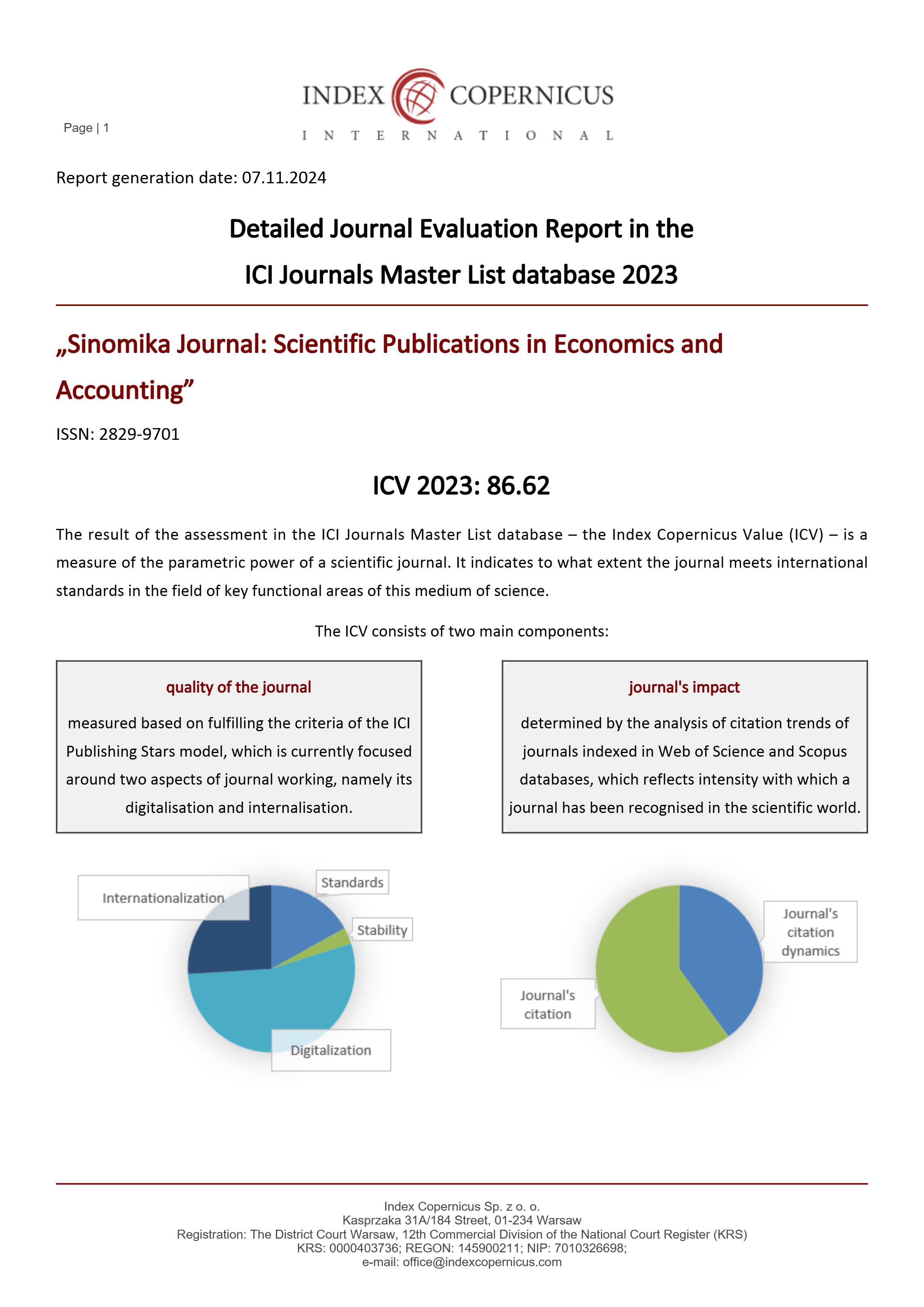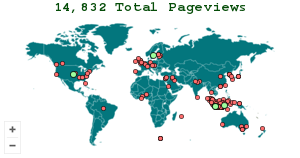Pengaruh Bekerja Dari Rumah, Keseimbangan Kehidupan Kerja, Dan Stres Kerja Terhadap Kepuasan Kerja Di Perusahaan Spare Part Manufaktur Otomotif Kabupaten Bekasi Di Saat Pandemi Covid-19
DOI:
https://doi.org/10.54443/sinomika.v1i3.320Keywords:
Work From Home, Work Life Balance, Work Stress, Job SatisfactionAbstract
The COVID-19 pandemic, starting in the early 2020s, is changing people's lives and the way they work, and affecting industries and organizations around the world. Many companies or organizations are starting to think about ways to provide security and smoothness to the company's or organization's business in the COVID-19 pandemic situation so that employees are able to carry out their obligations by doing work from home. This study aims to fill the gap by investigating some of the potential predictors of job satisfaction while employees work from home from the impact of the COVID-19 pandemic such as work-life balance and work stress. A quantitative approach is used on 135 employees who work from home in an automotive spare part manufacturing company. The collected data were analyzed using SEM tools. The results revealed that working from home, work-life balance and work stress had a significant effect on job satisfaction. Working from home as a new step in working can sustain job satisfaction as the current working atmosphere for workers. Responding to the situation during the COVID-19 pandemic, working from home can be a positive sign that needs attention for companies or organizations. The results of the study show that there is a strong relationship between working srom home and work life balance and work stress which increases job satisfaction, while work life balance is not positively related to job satisfaction when working from home and working from home during a pandemic can reduce work stress and increase job satisfaction.
Downloads
References
Adha, P. P. (2021) ‘Pengaruh stres kerja dan kecerdasan emosional terhadap kepuasan kerja karyawan PT. X saat Pandemi Covid-19’. Universitas Islam Negeri Maulana Malik Ibrahim.
Ahmed, I., Nawaz, M. M., Iqbal, N., Ali, I., Shaukat, Z., & Usman, A. (2010) ‘Islamic Work Ethic: The Role of Intrinsic Motivation, Job Satisfaction, Organizational Commitment and Job Performance’, Ahmed, I., Nawaz, M. M., Iqbal, N., Ali, I., Shaukat, Z., & Usman, A. (2010), 65(ICIBSoS 2012), pp. 1102–1106. doi: 10.1016/j.sbspro.2014.05.148.
Al-Haroon, H. I. and Al-Qahtani, M. F. (2020) ‘The demographic predictors of job satisfaction among the nurses of a major public hospital in KSA’, Journal of Taibah University Medical Sciences, 15(1), pp. 32–38. doi: 10.1016/j.jtumed.2019.11.003.
Aliya, G. R. and Saragih, R. (2020) ‘Pengaruh Work-Life Balance dan Lingkungan Kerja Terhadap Kepuasan Kerja Karyawan Di PT Telkom Divisi Telkom Regional III Jawa Barat’, Jurnal Ilmiah MEA (Manajemen, Ekonomi, & Akuntansi), 4(3), pp. 84–95.
Anderson, A. J. (2015) ‘European Journal of Work and Organizational Psychology The impact of telework on emotional experience : When , and for whom , does telework improve daily affective well-being ?’, (February 2015), pp. 37–41. doi: 10.1080/1359432X.2014.966086.
Ariana, I. W. J. and Riana, I. G. (2016) ‘Pengaruh work-family conflict, keterlibatan kerja dan stres kerja terhadap kepuasan kerja karyawan’. Udayana University.
Azarbouyeh, A. and Jalali Naini, S. G. (2014) ‘A study on the effect of teleworking on quality of work life’, Management Science Letters, 4(6), pp. 1063–1068. doi: 10.5267/j.msl.2014.5.027.
Azdanal, M. R., Zamzam, F. and Rostiati, N. (2021) ‘Pengaruh Work Life Balance Iklim Organisasi Dan Reward Masa Pandemi Terhadap Kepuasan Kerja’, Integritas Jurnal Manajemen Profesional (IJMPRO), 2(2), pp. 235–248.
Bentley, T. A. et al. (2016) ‘The role of organisational support in teleworker wellbeing : A socio- technical systems approach’, Applied Ergonomics, 52, pp. 207–215. doi: 10.1016/j.apergo.2015.07.019.
Boell, S. K. et al. (2013) ‘Advantages, challenges and contradictions of the transformative nature of telework: A review of the literature’, 19th Americas Conference on Information Systems, AMCIS 2013 - Hyperconnected World: Anything, Anywhere, Anytime, 5(August), pp. 3521–3530.
ten Brummelhuis, L. L. et al. (2012) ‘Do new ways of working foster work
engagement?’, Psicothema, 24(1), pp. 113–20. Available at: http://www.ncbi.nlm.nih.gov/pubmed/22269373.
Chao, M.-C. et al. (2015) ‘Workplace stress, job satisfaction, job performance, and turnover intention of health care workers in rural Taiwan.’, Asia-Pacific journal of public health, 27(2), pp. NP1827-36. doi: 10.1177/1010539513506604.
Chung 2018 (2018) ‘FUTURE OF WORK AND FLEXIBLE WORKING IN Future of
work and flexible working in Estonia’.
Chung, H. and van der Lippe, T. (2020) ‘Flexible Working, Work–Life Balance, and Gender Equality: Introduction’, Social Indicators Research, 151(2), pp. 365–381. doi: 10.1007/s11205-018-2025-x.
Coenen, M. and Kok, R. A. W. (2014) ‘Workplace flexibility and new product development performance : The role of telework and flexible work schedules’, EUROPEAN MANAGEMENT JOURNAL. doi: 10.1016/j.emj.2013.12.003.
Coetzee, M. and Villiers, M. De (2010) ‘Sources of job stress , work engagement and career orientations of employees in a South African fi nancial institution’, Southern African Business Review, 14(1), pp. 27–58.
cohen dan liani (2009) ‘Work-family conflict among female employees in Israeli hospitals’. doi: 10.1108/00483480910931307.
Contreras, F., Baykal, E. and Abid, G. (2020) ‘E-Leadership and Teleworking in Times of COVID-19 and Beyond : What We Know and Where Do We Go’, 11(December), pp. 1–11. doi: 10.3389/fpsyg.2020.590271.
Daunt, K. L. and Harris, L. C. (2012) ‘Exploring the forms of dysfunctional customer behaviour: A study of differences in servicescape and customer disaffection with service’, Journal of Marketing Management, 28(1–2), pp. 129–153. doi: 10.1080/0267257X.2011.619149.
Deci, E. L. et al. (2009) ‘The " What " and " Why " of Goal Pursuits : Human Needs and the Self-Determination of Behavior Human Needs and the Self-Determination of Behavior’, 7965. doi: 10.1207/S15327965PLI1104.
Edralin, D. M. (2012) ‘Innovative Work-Life Balance Strategies of Filipina Entrepreneurs: New Evidence from Survey and Case Research Approaches’, Procedia - Social and Behavioral Sciences, 57, pp. 201–208. doi: 10.1016/j.sbspro.2012.09.1175.
Ellis, T. S. and Webster, R. L. (1998) ‘IS Managers ’ Innovation Toward Telecommuting : A Structural Equation Model Theoretical Background - Innovativeness’, 00(1978).
Fedáková, D. and Ištoňová, L. (2017) ‘Slovak IT-employees and new ways of working : impact on work-family borders and work-family balance’, Československá psychologie (Czechoslovak Psychology), LXI(1), pp. 68–83.
Fila, M. J. (2014) ‘Stressful Work and Turnover: The Mediating Role of Psychological Strain’, Academy of Management Proceedings, 2014(1), p. 17620. doi: 10.5465/ambpp.2014.17620abstract.
Fisher, G. G., Bulger, C. A. and Smith, C. S. (2009) ‘Beyond Work and Family : A Measure of Work / Nonwork Interference and Enhancement’, 14(4), pp. 441–456. doi: 10.1037/a0016737.
Fonner, K. L. and Roloff, M. E. (2010) ‘Why Teleworkers are More Satisfied with Their Jobs than are Office-Based Workers : When Less Contact is Beneficial’, 38(4). doi: 10.1080/00909882.2010.513998.
Gajendran, R. S. and Harrison, D. A. (2007) ‘The Good, the Bad, and the Unknown About Telecommuting: Meta-Analysis of Psychological Mediators and Individual Consequences’, Journal of Applied Psychology, 92(6), pp. 1524–1541. doi: 10.1037/0021-9010.92.6.1524.
Gálvez, A., Tirado, F. and Alcaraz, J. M. (2020) ‘“Oh! Teleworking!” Regimes of engagement and the lived experience of female Spanish teleworkers’, Business Ethics, 29(1), pp. 180–192. doi: 10.1111/beer.12240.
Garg, D. and Rani, S. (2014) ‘Work life balance : A key driver to improve organizational performance’, International Journal of Research, 1(11), pp. 1471–1477.
Golden, T. D. and Eddleston, K. A. (2020) ‘Is there a price telecommuters pay? Examining the relationship between telecommuting and objective career success’, Journal of Vocational Behavior, 116, p. 103348. doi: 10.1016/j.jvb.2019.103348.
Gopinathan, S. and Raman, M. (2015) ‘Ergonomic Quality, Playing a Role in Ensuring Work Life Balance among Malaysian ICT Workers’, Procedia - Social and Behavioral Sciences, 211(September), pp. 1210–1215. doi: 10.1016/j.sbspro.2015.11.161.
Gragnano, A., Simbula, S. and Miglioretti, M. (2020) ‘Work–life balance: weighing the importance of work–family and work–health balance’, International Journal of Environmental Research and Public Health, 17(3), pp. 9–11. doi: 10.3390/ijerph17030907.
Hair, J. F. et al. (2014) Multivariate Data Analysis.
Hilbrecht, M. et al. (2013) ‘Remixing work, family and leisure: Teleworkers’ experiences of everyday life’, New Technology, Work and Employment, 28(2), pp. 130–144. doi: 10.1111/ntwe.12010.
Hsu, Y. Y. et al. (2019) ‘Long Hours’ Effects on Work-Life Balance and Satisfaction’,
BioMed Research International, 2019. doi: 10.1155/2019/5046934.
Hyatt, E. and Coslor, E. (2018) ‘Compressed lives: how “flexible” are employer-imposed compressed work schedules?’, Personnel Review, 47(2), pp. 278–293. doi: 10.1108/PR-08-2016-0189.
Iddagoda, Y. A. and Opatha, H. H. D. N. P. (2020) ‘Relationships and Mediating Effects of Employee Engagement: An Empirical Study of Managerial Employees of Sri Lankan Listed Companies’, SAGE Open, 10(2). doi: 10.1177/2158244020915905.
Jackson, L. T. B. and Fransman, E. I. (2018) ‘Flexi work
Downloads
Published
How to Cite
Issue
Section
License
Copyright (c) 2022 Slamet Widianto, Rojuaniah

This work is licensed under a Creative Commons Attribution-NonCommercial 4.0 International License.

























